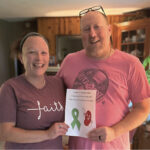Most of us remember the monsters under the bed and in the closet that would keep us up long after our parents kissed us goodnight. To this day, I distinctly remember my nightmare of being chased all night by a wolf, waking just as it was about to bite my leg. Sleep disturbances can cause stress for children and parents. When reviewing sleep during a well-child checkup, parents will often ask about bad dreams.
Sleep typically occurs in several stages over the course of the night. The rapid eye movement (REM) stage is when dreaming occurs. Though both often-labeled “bad dreams,” night terrors and nightmares are actually two slightly different types of sleep disturbances common in childhood that occur during different phases of the sleep cycle.
Night terrors occur during the first two to three hours of sleep as a child transitions from non-REM to REM sleep. Night terrors typically occur in children 4 to 12 years old, though they have been reported in children as young as 18 months old. During a night terror, a child may shout, scream in distress and sit up. Parents will report their child was sweating and breathing fast with a rapid heartbeat.
Parents are especially distressed as they are unable to calm their children down. In fact, it is best not to try and wake your child from sleep during a night terror as this can be more disorienting and agitating and prolong the episode. Episodes typically last 10 to 20 minutes and, after this time, the child usually calms down and goes back to sleep. Parents can be reassured that children will not remember the event in the morning as they were in deep sleep and there are no mental images to recall. For parents, the best thing to do is to wait patiently and be sure your child does not get hurt thrashing around.
Night terrors seem to run in families. About 80 percent of children with night terrors have a family member who had night terrors or sleepwalking (another childhood sleep disturbance). Children who are excessively tired, sick or in a new environment may be more likely to have night terrors. Maintaining a consistent, predictable bedtime routine may reduce episodes. Less often, medical issues such as obstructive sleep apnea, gastric reflux and certain seizures may present similarly to night terrors, though your doctor can typically exclude these things with a basic medical history.
Nightmares occur during the REM phase of sleep, so they tend to happen in the early hours of the morning. Nightmares peak in school-age children, though even older kids and adults may have occasional nightmares. In contrast to night terrors, when a child wakes from a nightmare, the images in the dream are very fresh and real. After waking from a nightmare, a parents’ presence can provide security and calm. In these cases, parents can affirm that the nightmare is over and everything is okay. Explain that everyone has bad dreams and it is natural to be scared sometimes. Help your child to transition back to sleep by turning on a nightlight, offering a favorite stuffed toy or doing some “magic.” A babysitter of ours suggested a spray bottled filled with “magic” water and prominently labeled “Monster Spray” for emergency use in the middle of the night.
Nightmares tend to reflect things a child is experiencing. They may be a way for the mind to process worries and concerns encountered during the day. For example, scary movies and books may trigger nightmares. However, they may also occur following trauma, injury or a natural disaster. In select cases, referral to a therapist for children experiencing nightmares as part of post-traumatic stress may be warranted.
The good news about both night terrors and nightmares is that they naturally tend to resolve over time. Even better is that the majority of them can be handled with the best medicine parents provide: reassurance, hugs and kisses. Sweet dreams!
Dr. Deepa Sekhar is a pediatrician at the Milton S. Hershey Medical Center.





